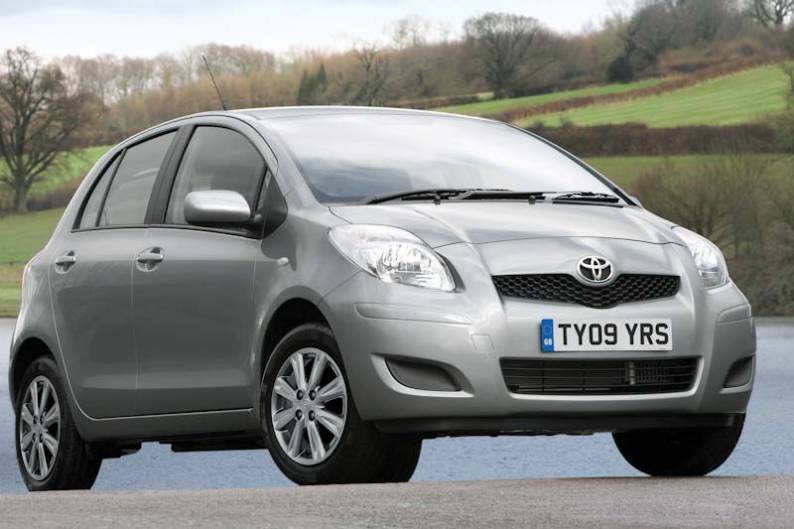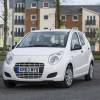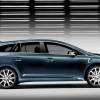
RAC sale – up to 33% off*
• Roadside cover from £5.29 a month†
• We get to most breakdowns in 60 mins or less
• Our patrols fix 4/5 breakdowns on the spot

By Andy Enright
Introduction
Toyota's Yaris used to have things very easy. It was the default small Toyota. Then the company squeezed it from below with the Aygo and from above with the increasingly accomplished Auris. Suddenly the Yaris wasn't such an obvious choice. It's still a great used buy, offering excellent reliability and modest running costs. Choose one of these post 2009 cars and you also get the much improved 1.33-litre petrol engine which endows the Yaris with a reasonable turn of pace. Here's what to look for when shopping for a used Yaris.
Models
3 & 5dr supermini (1.0, 1.3 petrol, 1.4 diesel [T2, TR, SR, T Spirit])
History
Peering into the world of the car designer reveals some fascinating insights. Take the Toyota Yaris, for example. The second generation car was introduced in December 2005. A couple of years after this car was launched, work would begin on the third generation car which made landfall in late 2011. While this was going on, a separate team of Toyota designers was tasked with planning and designing a refreshed version of the second generation car, call it Mk 2.5 if you will, to arrive in dealerships in 2009 which was tasked with giving a vital kick to sales in that platform's autumn years.
This is the car we look at here and, to be honest, if you track down a decent used example, it'll still feel tight and fresh and anything but an exercise in dollying up an ageing idea, the facelift bringing a neater integration of the bonnet and bumper. The T3 trim level was dropped giving buyers the choice of T2, TR, SR or T Spirit. The major news was the arrival of the 1.33-litre engine with Stop & Start technology and the wider Yaris range also took a more committed approach to lowering economy and emissions with a series of weight saving, efficiency and aerodynamic tweaks made under Toyota's Optimal Drive banner. The SR level was dropped a few months later. In fact, so good were the powertrains fitted to this 'Mk 2.5' car that they were carried over into the all-new third generation vehicle in 2011.
What You Get
Aesthetically, the look of this version hasn't changed much in its time on the market, though a few detail improvements have been made. Smarter rear light clusters on the outside. And a return inside to conventional instrument dials after the digital clusters was deemed a little 'Buck Rogers' for conservative Yaris customers. The MPV-like forward placing of the windscreen makes the driving position seem a little more commanding than it is on some small cars (though it's a pity the steering wheel doesn't adjust for reach as well as height) and all-round visibility is very good. The cabin itself has plenty of stowage space -18-litres in all - and, though unremarkable in terms both of style and plastics quality, is screwed together beautifully. The double-sealed doors, for example, feel thick and weighty and shut with a thunk rather than a clang. You can see why this car continues to do so well in customer satisfaction surveys.
In the back, there's comfortable room for two adults but, as usual in this class of car, three would be a bit of a squash. At least headroom is less of an issue in this generation of Yaris thanks to an increase of 30mm in height over its predecessor. Really tall passengers can even recline the backrest by up to 10 degrees, a feature that aids comfort on longer journeys - or simply helps to send the kids to sleep. The seat is split 60:40 and you can slide both sections of it independently backwards and forwards by up to 150mm to prioritise either legroom or luggage space. Luggage-wise, there's 257-litres of luggage room with all the seats in place -and extra space under the boot floor. If you need more, fold the EasyFlat rear seats down and you're treated to one of the larger stowage areas of any supermini - 696-litres - and it's perfectly flat.
What You Pay
Please fill in the form here for an exact up-to-date information.
What to Look For
The Yaris has proven a very reliable vehicle, as evidenced by its strong showing in customer satisfaction surveys. Common faults are noticeable by their absence but it's worth checking to see if the car has been back to Toyota on recall advice. Toyota did issue a voluntary recall over a trim panel on the A-pillar which had the potential to come loose and there was also the much-publicised one for an accelerator pedal mechanism which could, in vanishingly improbable scenarios, get sticky. Otherwise it's just a case of checking it hasn't been mauled by shopping trolleys, kids or kerbs. Insist on a fully stamped up service record.
Replacement Parts
(approx based on a 2009 Yaris 1.0 TR) Toyotas are so reliable that it's hard to see how the dealers make a profit on spares that include a clutch assembly at £150, starter motors from £100, headlamps from £60 and brake pads at £21 a set. A new radiator for the Yaris will be around £200, while an exhaust system is in the region of £250.
On the Road
Although Toyota did tweak the look of the car and revise the trims, a lot of the budget was directed at improving the 1.33-litre engine and you have to say that was an unqualified success. Toyota calls it a 1.33-litre engine in an attempt to emphasise the differences over the unit we first saw in this model - and there are quite a few, most notably a hike in power from 87 to 100bhp. That's quite a lot for a car of this kind - a 1.4-litre VW Polo has only 85bhp for example and a 1.4-litre Ford Fiesta can't match it either. That means gutsy pulling power through the now standard 6-speed gearbox thanks to 120Nm of torque. Rest to sixty occupies 11.7s on the way to 109mph.
But statistics like that are not likely to be of much interest to the typical Yaris customer. Which is just as well for Toyota, for this car remains a competent but hardly exhilarating drive. Still, it does just enough to satisfy its likely target audience, with its direct, accurate electric steering, pliant ride and well controlled body roll. All-round visibility is good as well, something you especially appreciate in the kind of urban driving particularly suited to the entry-level 69bhp 1.0-litre petrol variant. The 90bhp 1.4-litre D-4D diesel works well here too. For such urban dwellers, there's the option of a 5-speed MultiMode automatic gearbox with the 1.3 and 1.4-litre engines.
Overall
It's just a shame that the word on how good this car is has well and truly been spread. It's fiendishly difficult to track down a significant bargain when shopping for a used Mk 2.5 Toyota Yaris, so it's likely you'll have to budget a little extra. The flipside of that is the reassurance that you're getting an extremely accomplished car and one that's about as close to being bullet proof as any used car purchase can be, especially if you get one through a franchised dealer scheme. What price peace of mind?






![Toyota Prius [XW50] (2016 - 2019) used car review](https://d1ix0byejyn2u7.cloudfront.net/drive/images/made/drive/images/remote/https_d2yv47kjv2gmpz.cloudfront.net/filestore/2/2/8_da9bea7bad9c8f2/ebf9f676ac6ae3491b1f259a29523e3e/822_5a4459c7074a5e7_100_100_70_c1_c_c.jpg)
